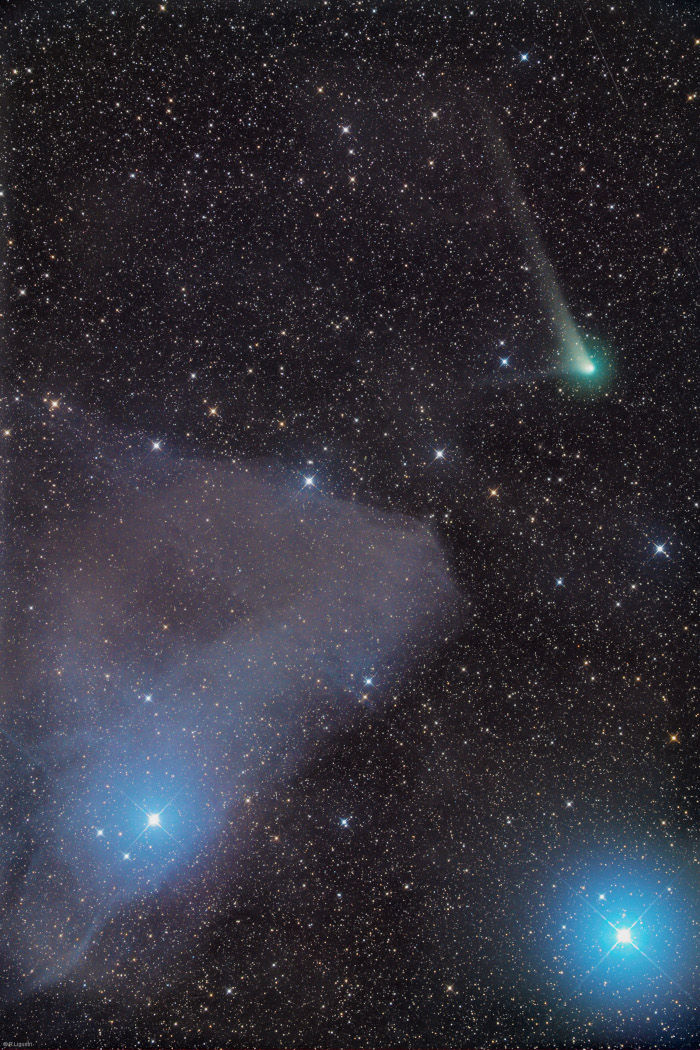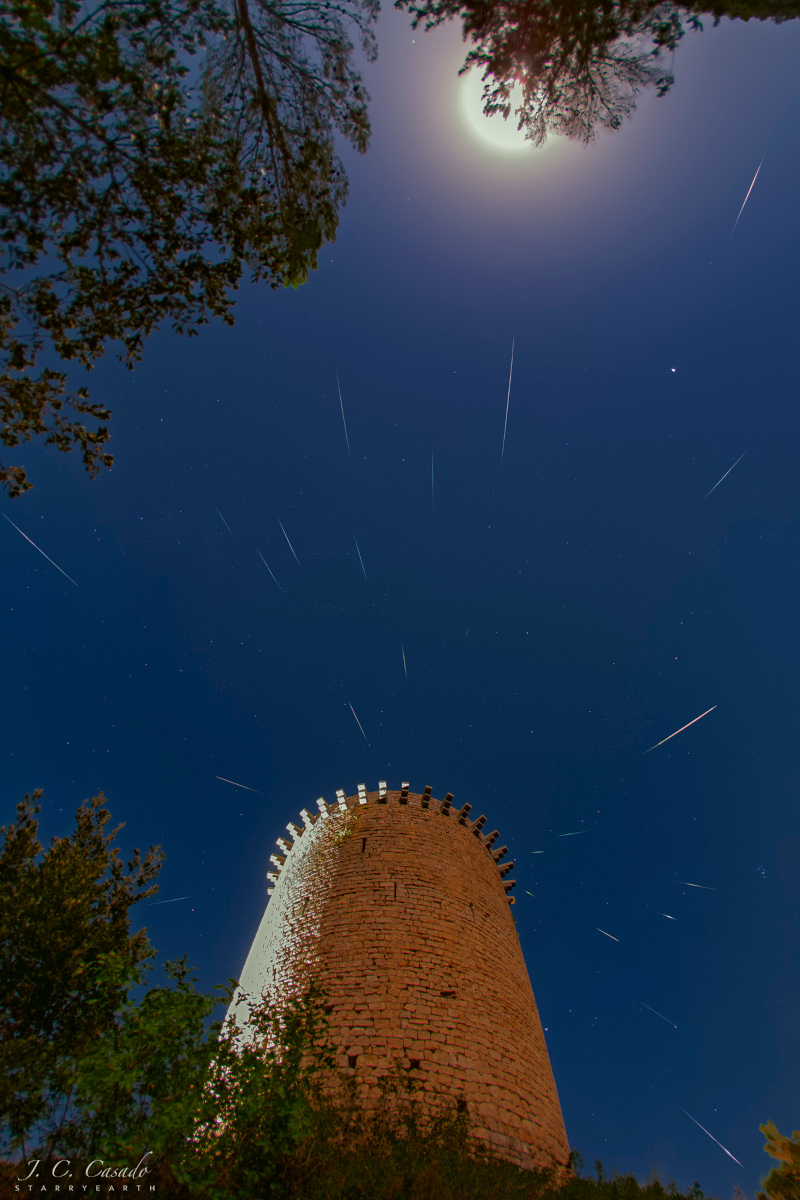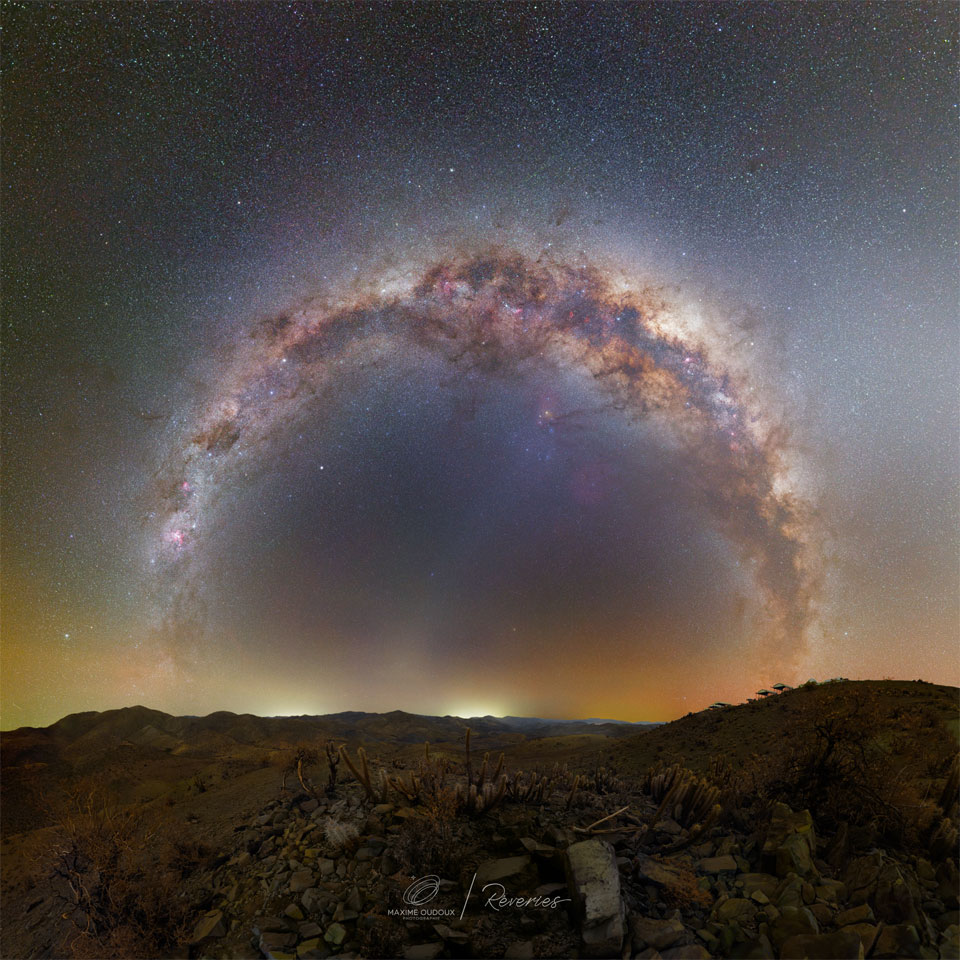Nombre total de pages vues
22/08/2022
MERVEILLEUX MONDE SOUS-MARIN - Poissons-clowns de Clark dans leur anémone
ASTRONOMY - Earth's Recent Climate Spiral
2022 August 22
Video Credit: NASA's Scientific Visualization Studio
Explanation: Is our Earth warming? Compared to the past 250 million years, the Earth is currently enduring a relative cold spell, possibly about four degrees Celsius below average. Over the past 120 years, though, data indicate that the average global temperature of the Earth has increased by nearly one degree Celsius. The featured visualization video depicts Earth's recent global warming in graphic terms. The depicted temperatures are taken from the Goddard Institute for Space Studies' Surface Temperature Analysis. Already noticeable by many, Earth's recent warming trend is causing sea levels to rise, precipitation patterns to change, and pole ice to melt. Few now disagree that recent global warming is occurring, and the Intergovernmental Panel on Climate Change (IPCC) has concluded that we humans have created a warming surge that is likely to continue. A continuation could impact many local agricultures and even the global economy. Although there seems to be no simple solutions, geoengineering projects that might help include artificial cloud creation to reduce the amount of sunlight heating the Earth's surface.
21/08/2022
ASTRONOMY - The Spinning Pulsar of the Crab Nebula
2022 August 21
Image Credit: NASA: X-ray: Chandra (CXC), Optical: Hubble (STScI), Infrared: Spitzer (JPL-Caltech)
Explanation: At the core of the Crab Nebula lies a city-sized, magnetized neutron star spinning 30 times a second. Known as the Crab Pulsar, it is the bright spot in the center of the gaseous swirl at the nebula's core. About twelve light-years across, the spectacular picture frames the glowing gas, cavities and swirling filaments near the Crab Nebula's center. The featured picture combines visible light from the Hubble Space Telescope in purple, X-ray light from the Chandra X-ray Observatory in blue, and infrared light from the Spitzer Space Telescope in red. Like a cosmic dynamo the Crab pulsar powers the emission from the nebula, driving a shock wave through surrounding material and accelerating the spiraling electrons. With more mass than the Sun and the density of an atomic nucleus,the spinning pulsar is the collapsed core of a massive star that exploded. The outer parts of the Crab Nebula are the expanding remnants of the star's component gasses. The supernova explosion was witnessed on planet Earth in the year 1054.
20/08/2022
MACROPHOTOGRAPHIE - Le pissenlit jamais imaginé
ASTRONOMY - Stardust and Comet Tails
2022 August 20
Image Credit & Copyright: Rolando Ligustri (CARA Project, CAST)
Explanation: Heading for its closest approach to the Sun, or perihelion, on December 19 comet C/2017 K2 (PanSTARRS) remains a sight for telescopic observers as it sweeps through planet Earth's skies in the constellation Scorpius. The comet currently sports a greenish coma, long whitish dust tail, and short ion tail in this deep image from August 18. The 2x3 degree wide field of view includes part of the dusty nebula IC 4592 reflecting blue starlight. Also known as the Blue Horsehead Nebula, IC 4592 is about 400 light-years distant while the comet is just under 17 light-minutes away. First spotted at a distance well beyond the orbit of Saturn C/2017 K2 is on its maiden voyage to the inner solar system, a pristine visitor from the remote Oort cloud.
19/08/2022
ASTRONOMY - Saturn: 1993 - 2022
2022 August 19
Image Credit & Copyright: Tunc Tezel (TWAN)
Explanation: Saturn is the most distant planet of the Solar System easily visible to the unaided eye. With this extraordinary, long-term astro-imaging project begun in 1993, you can follow the ringed gas giant for one Saturn year as it wanders once around the ecliptic plane, finishing a single orbit around the Sun by 2022. Constructed from individual images made over 29 Earth years, the split panorama is centered along the ecliptic and crossed by the plane of our Milky Way galaxy. Saturn's position in 1993 is at the right side, upper panel in the constellation Capricornus and progresses toward the left. It returns to the spot in Capricornus at left in the lower panel in 2022. The consistent imaging shows Saturn appears slightly brighter during the years 2000-2005 and 2015-2019, periods when its beautiful rings were tilted more face-on to planet Earth.
18/08/2022
ASTRONOMY - Full Moon Perseids
2022 August 18
Image Credit & Copyright: Juan Carlos Casado (Starry Earth, TWAN)
Explanation: The annual Perseid meteor shower was near its peak on August 13. As planet Earth crossed through streams of debris left by periodic Comet Swift-Tuttle meteors rained in northern summer night skies. But even that night's nearly Full Moon shining near the top of this composited view couldn't hide all of the popular shower's meteor streaks. The image captures some of the brightest perseid meteors in many short exposures recorded over more than two hours before the dawn. It places the shower's radiant in the heroic constellation of Perseus just behind a well-lit medieval tower in the village of Sant Llorenc de la Muga, Girona, Spain. Observed in medieval times, the Perseid meteor shower is also known in Catholic tradition as the Tears of St. Lawrence, and festivities are celebrated close to the annual peak of the meteor shower. Joining the Full Moon opposite the Sun, bright planet Saturn also shines in the frame at the upper right.
ASTRONOMY - Stargate Milky Way
2022 August 17
Image Credit & Copyright: Maxime Oudoux
Explanation: There is a huge gate of stars in the sky, and you pass through it twice a day. The stargate is actually our Milky Way Galaxy, and it is the spin of the Earth that appears to propel you through it. More typically, the central band of our Milky Way appears as a faint band stretching across the sky, only visible in away from bright city lights. In a long-exposure wide-angle image from a dark location like this, though, the Milky Way's central plane is easily visible. The featured picture is a digital composite involving multiple exposures taken on the same night and with the same camera, but employing a stereographic projection that causes the Milky Way to appear as a giant circular portal. Inside the stargate-like arc of our Galaxy is a faint stripe called zodiacal light -- sunlight reflected by dust in our Solar System. In the foreground are cacti and dry rocks found in the rough terrain of the high desert of Chile, not far from the El Sauce Observatory and the developing Vera Rubin Observatory, the latter expected to begin routine operations in 2024.
16/08/2022
ASTRONOMY - A Meteor Wind over Tunisia
2022 August 16
Image Credit & Copyright: Makrem Larnaout
Explanation: Does the Earth ever pass through a wind of meteors? Yes, and they are frequently visible as meteor showers. Almost all meteors are sand-sized debris that escaped from a Sun-orbiting comet or asteroid, debris that continues in an elongated orbit around the Sun. Circling the same Sun, our Earth can move through an orbiting debris stream, where it can appear, over time, as a meteor wind. The meteors that light up in Earth's atmosphere, however, are usually destroyed. Their streaks, though, can all be traced back to a single point on the sky called the radiant. The featured image composite was taken over two days in late July near the ancient Berber village Zriba El Alia in Tunisia, during the peak of the Southern Delta Aquariids meteor shower. The radiant is to the right of the image. A few days ago our Earth experienced the peak of a more famous meteor wind -- the Perseids.
ASTRONOMY - Northern Fox Fires
2025 December 12 Northern Fox Fires Image Credit & Copyright : Dennis Lehtonen Explanation: In a Finnish myth , when an arctic fox ...

-
2022 September 26 All the Water on Planet Earth Illustration Credit: Jack Cook, Adam Nieman, Woods Hole Oceanographic Institution ; Data ...
-
2025 May 11 The Surface of Venus from Venera 14 Image Credit: Soviet Planetary Exploration Program , Venera 14 ; Processing & Copyri...








